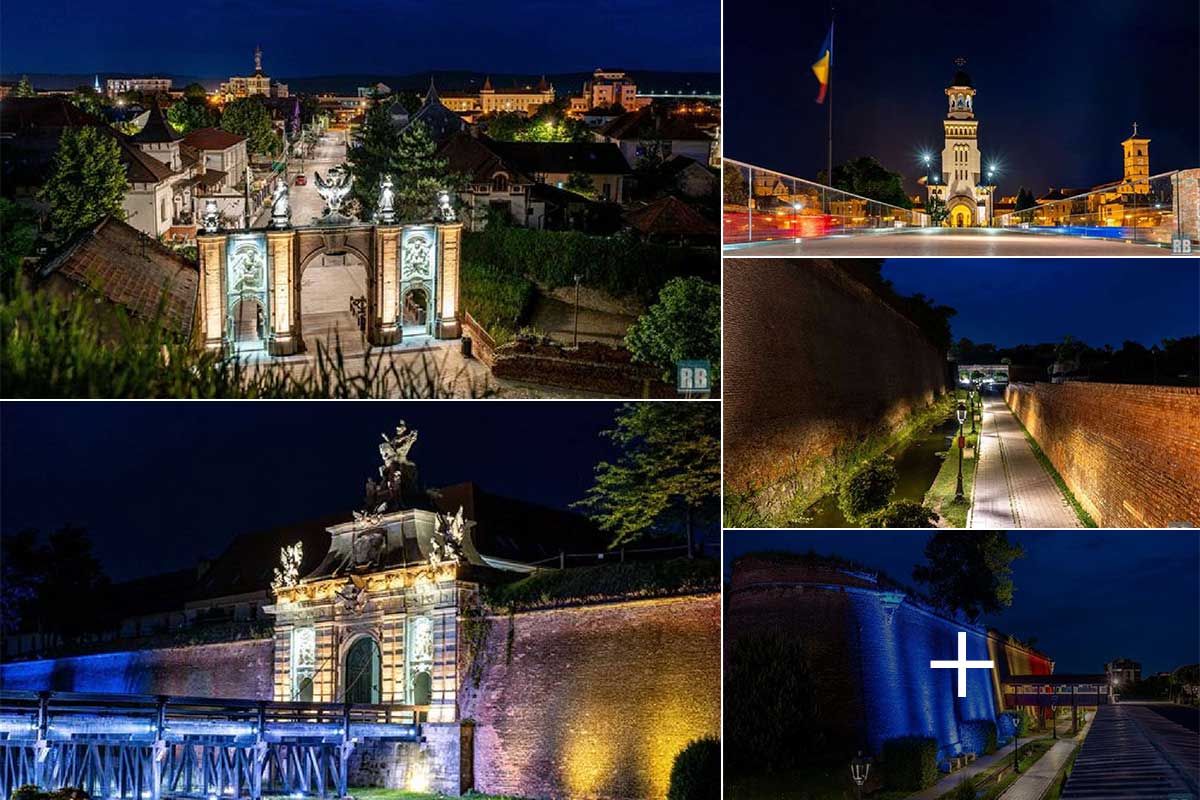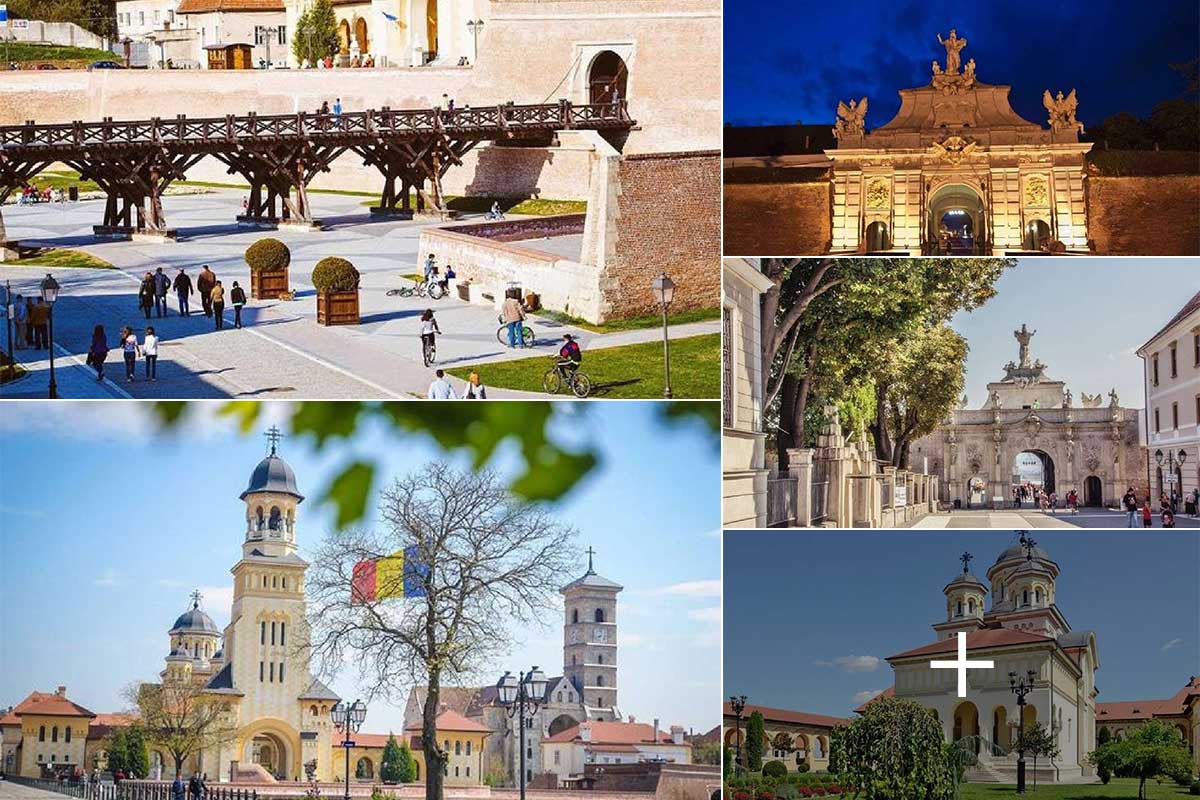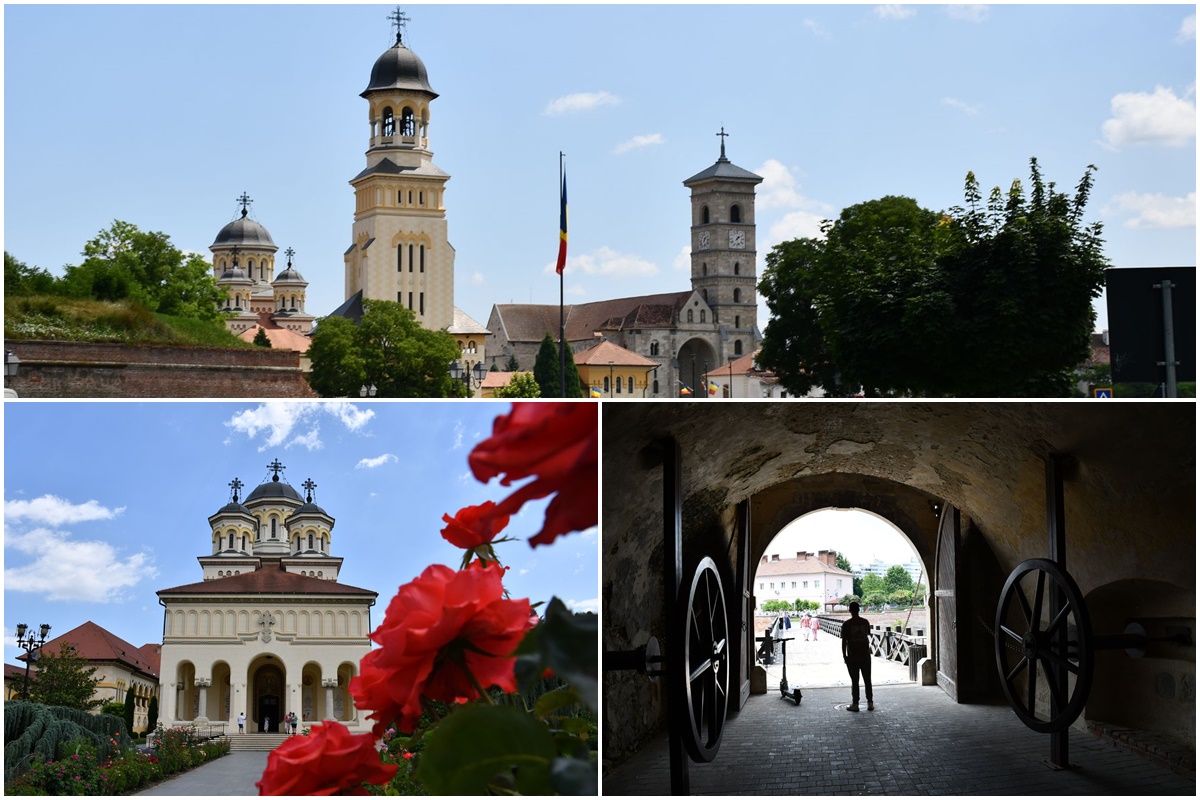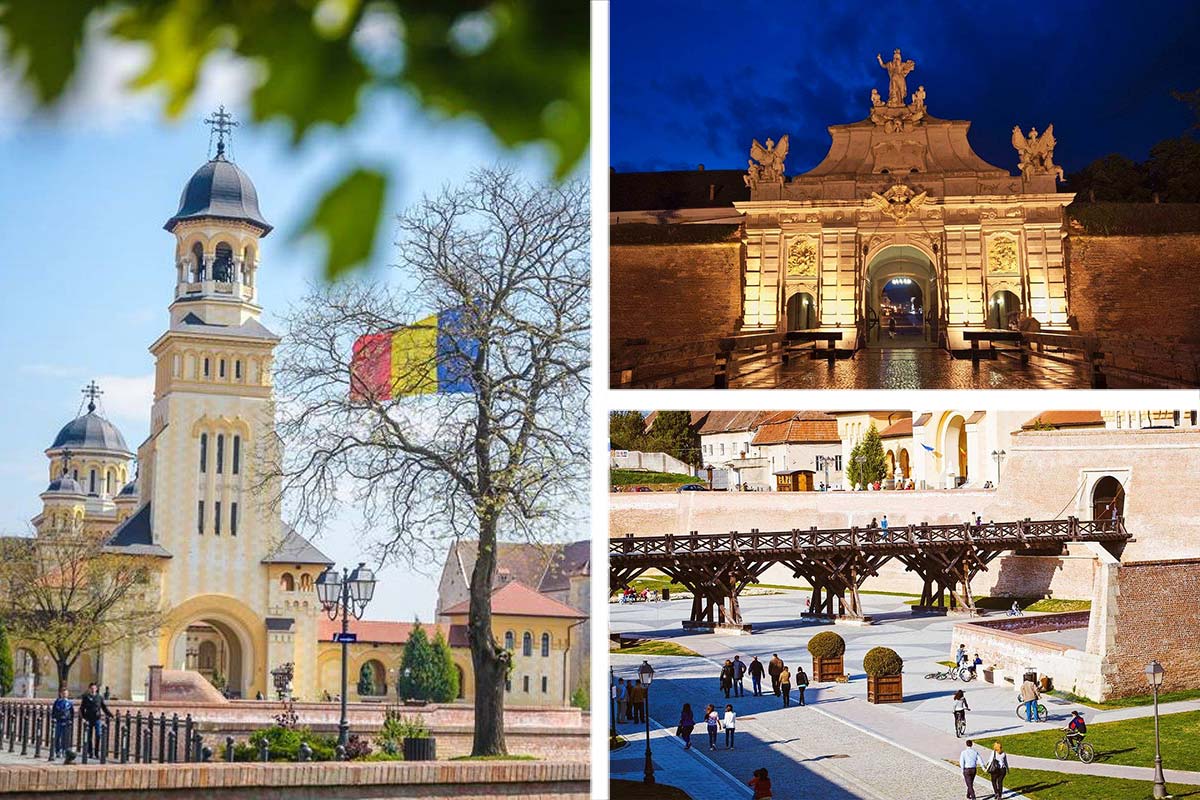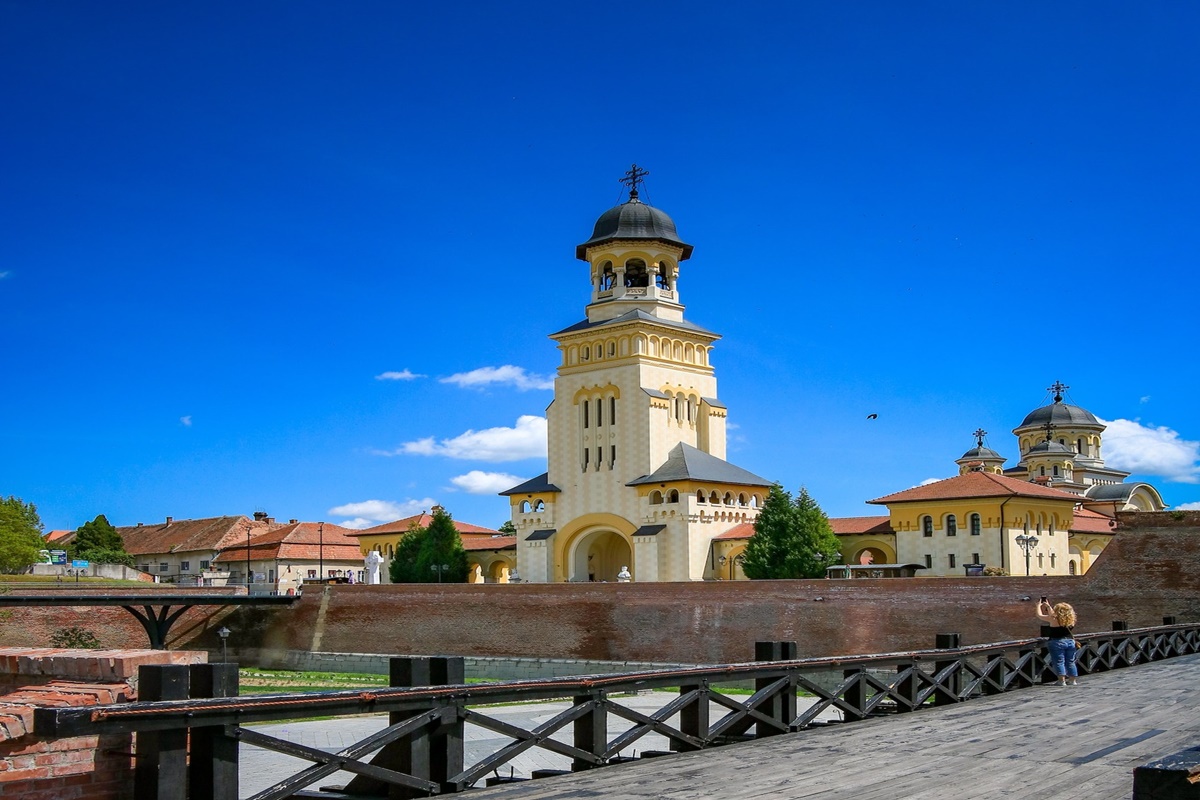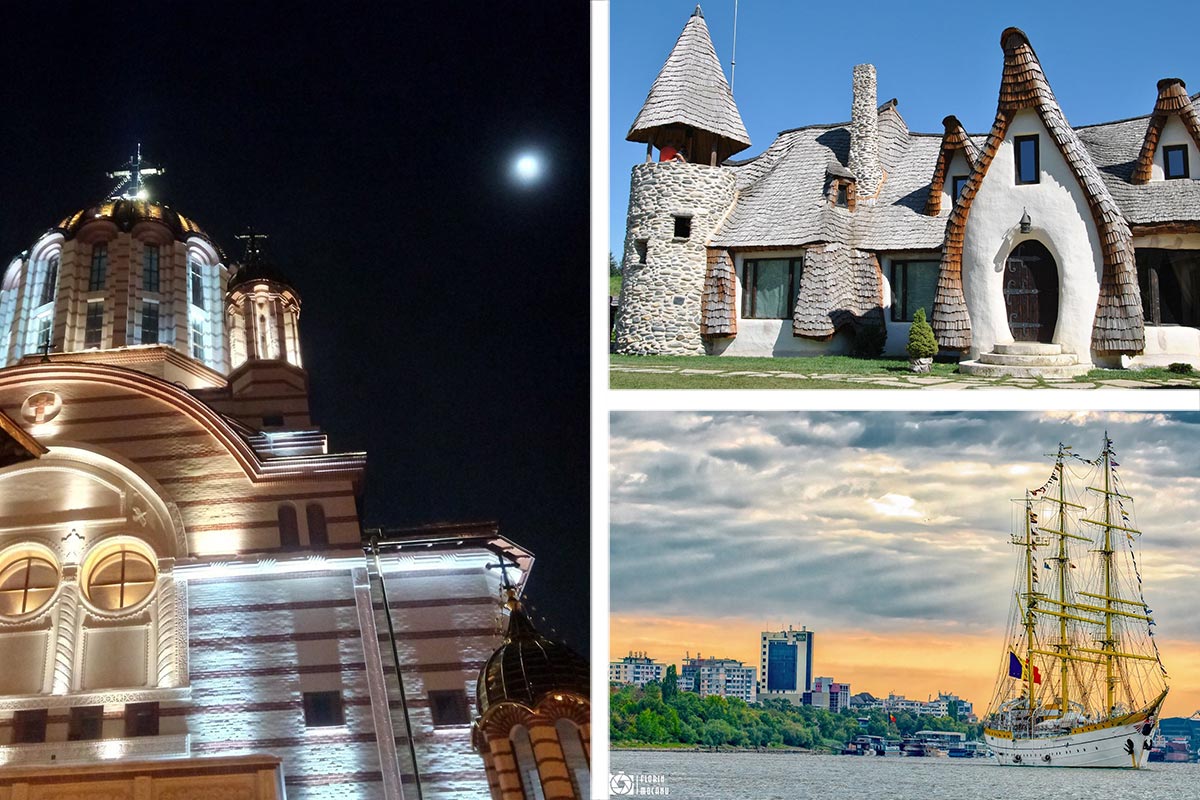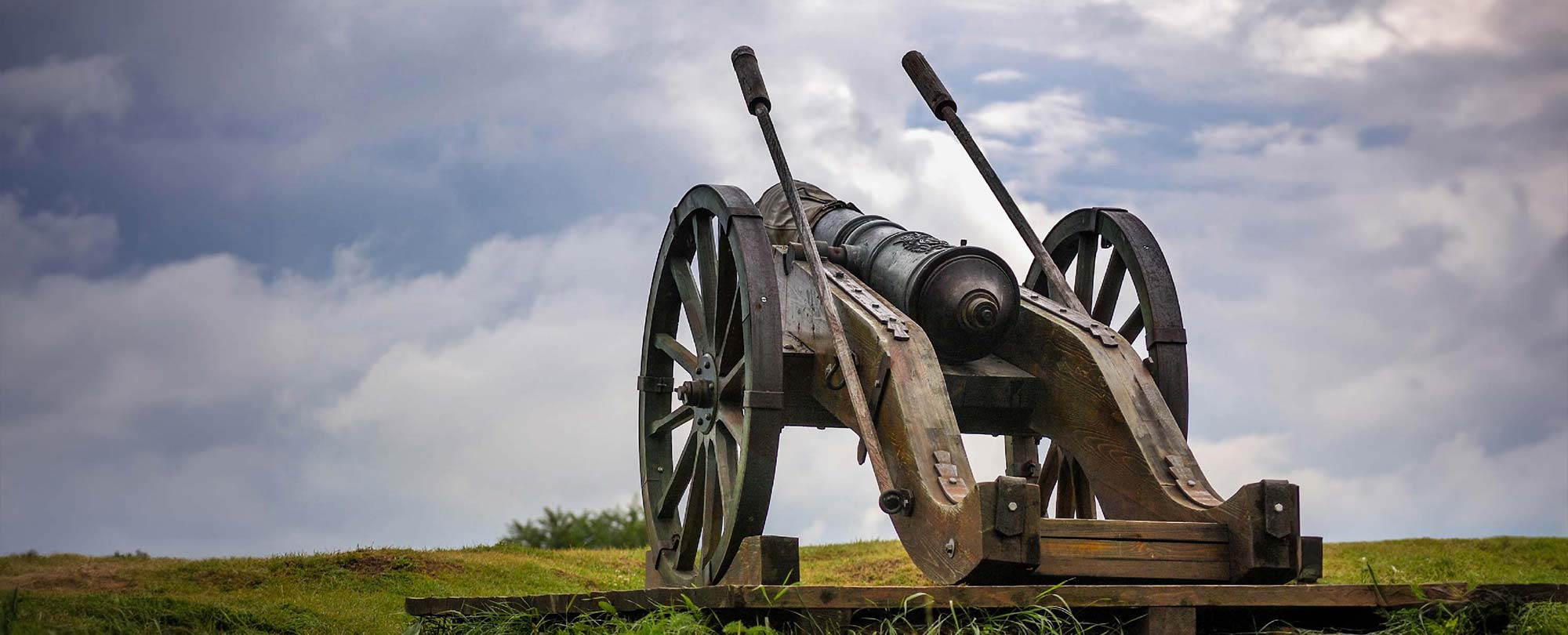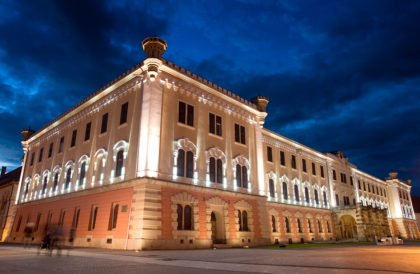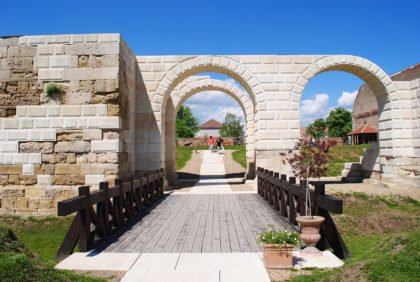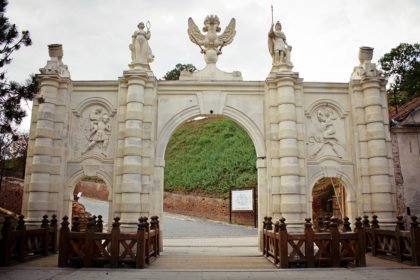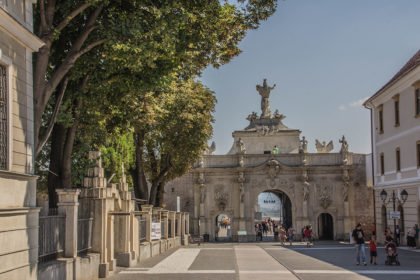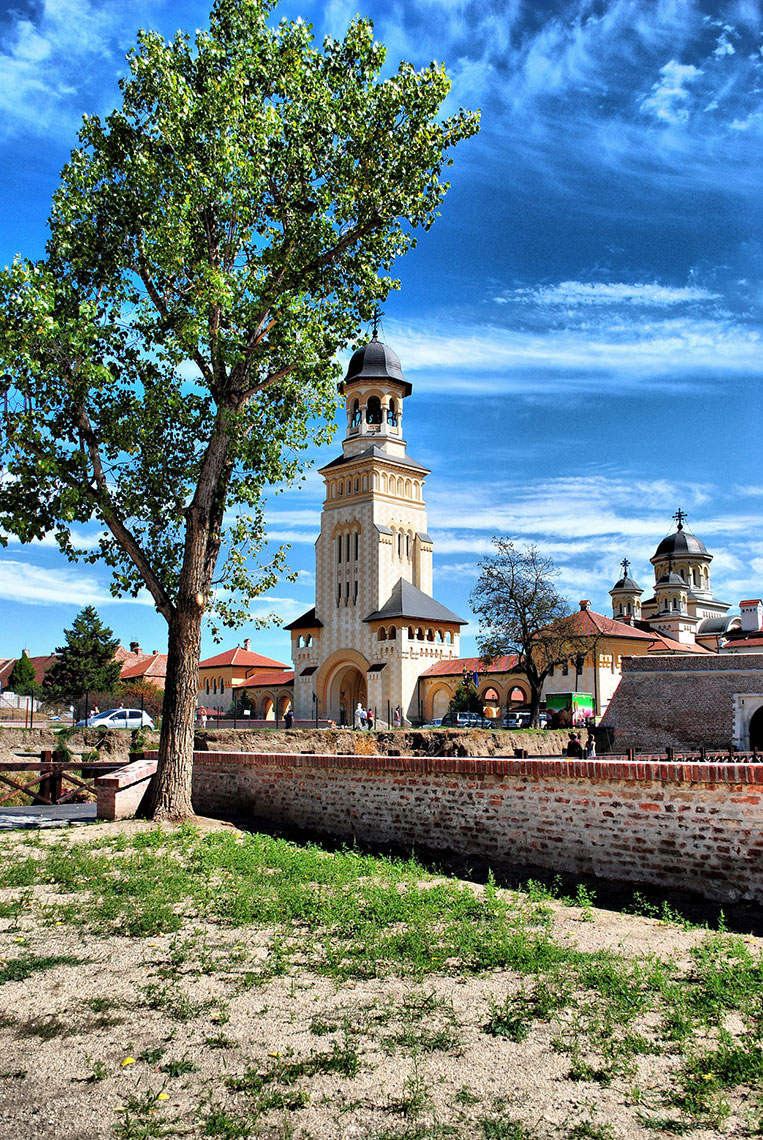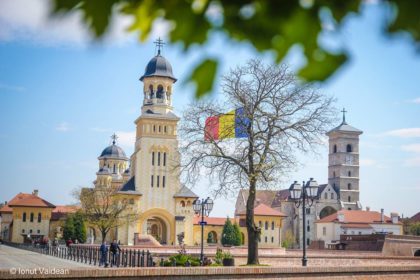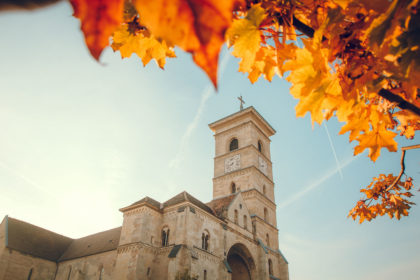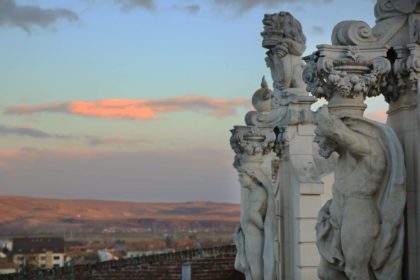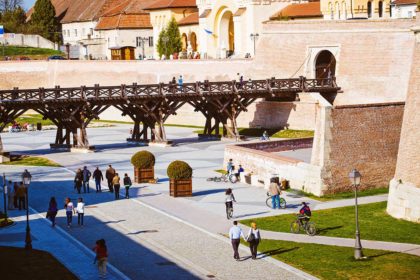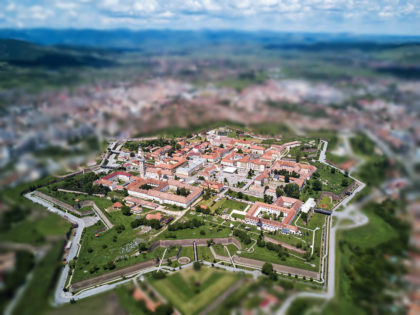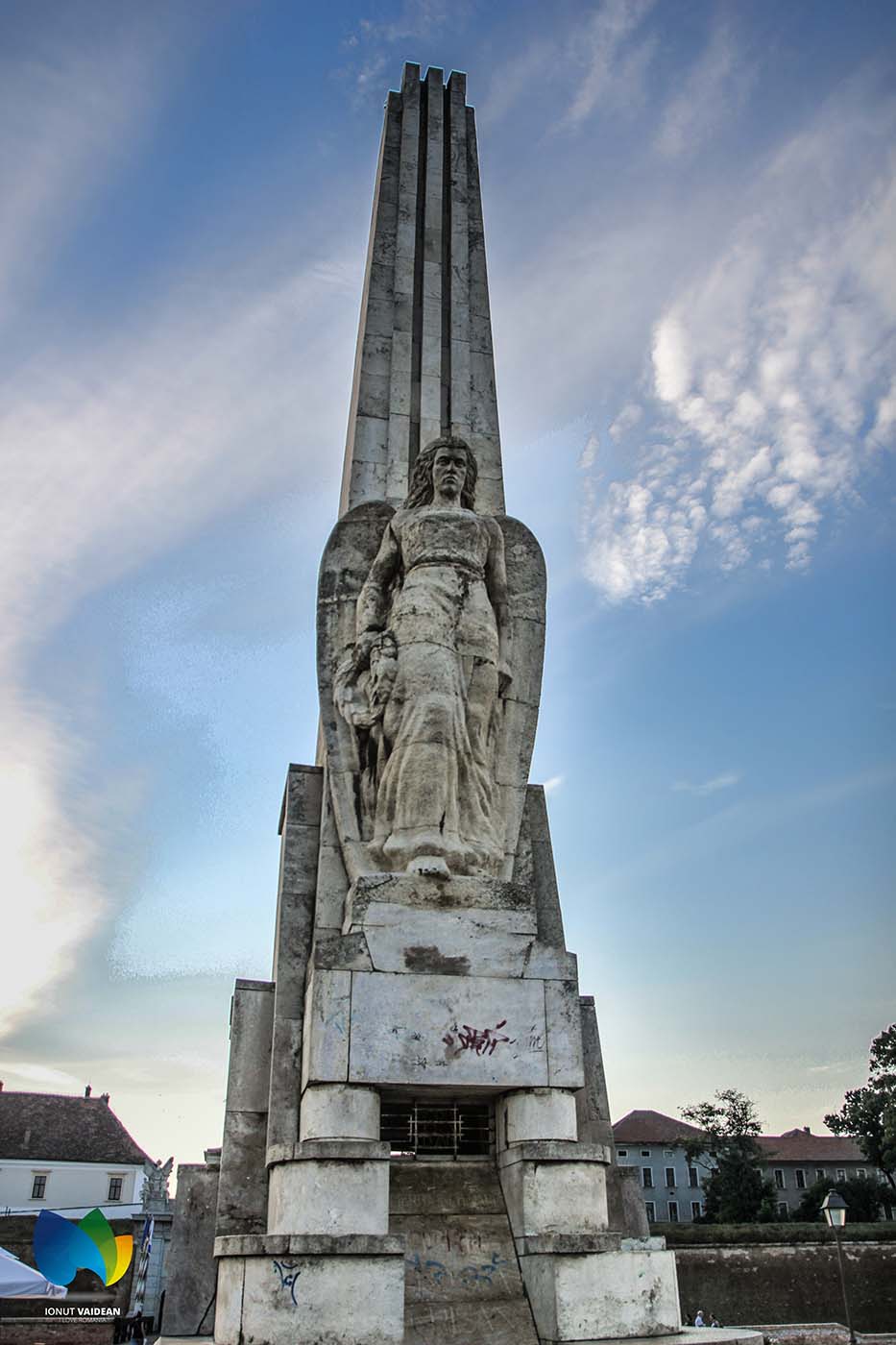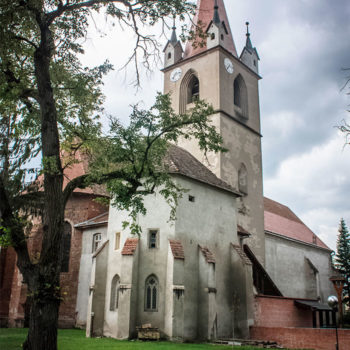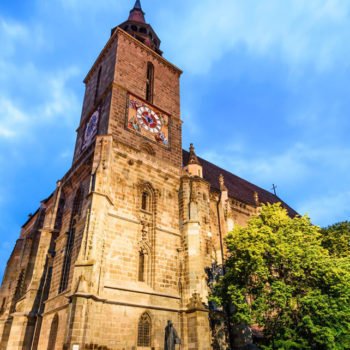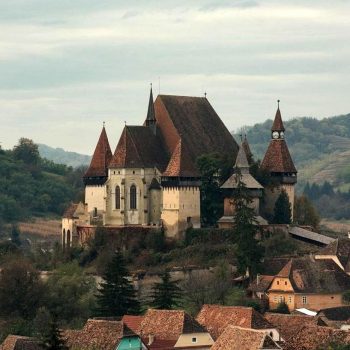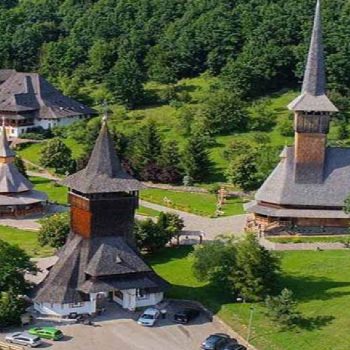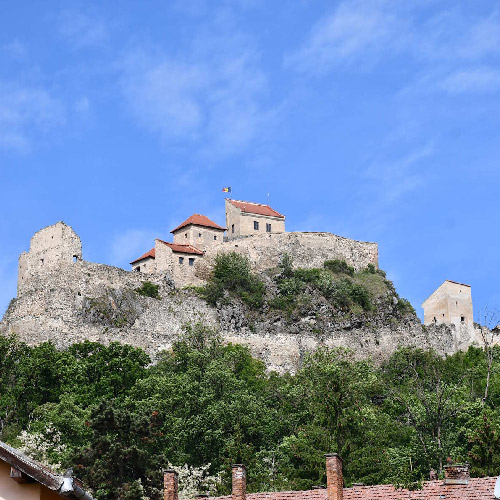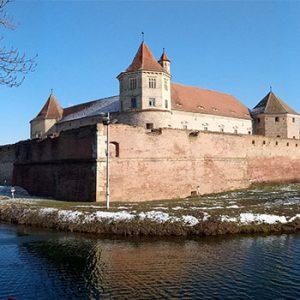Short description: Alba Carolina Citadel is one of the largest citadels in Romania and covers a huge area. Due to its beauty and uniqueness, the citadel is the most important tourist point of the city of Alba-Iulia. More and more tourists pass here every year, who are impressed by this wonderful location. So, you must not miss this touristic objective under any circumstances, and of course the whole beautiful city, Alba-Iulia.
More details – History Present
It was built between 1715-1738, according to the plan of the Italian architect Giovanni Morando Visconti, with three lines of fortification: 7 bastions, linked together by curtains, 6 ravelins and a counterguard, all separated by the main ditch. In the area of the current citadel, during the Roman period, there was the camp of the 13th Legion Gemina (Apulum) whose walls provided construction material for the medieval citadel (Bălgrad), in turn incorporated into the bastion (Carlsburg).
The Alba Carolina fortress complex is composed of three defense systems and presents characteristics of the first and second Vauban systems. The main body of the fortress is shaped like an irregular heptagon, the seven bastions giving it a starry image typical of systems of this kind. The largest bastion, named Trinity, has a crest crowned with multiple fields and acanthus leaves. The other bastions bear the names of Saint Stephen, Eugene of Savoy, Saint Michael, Saint Charles, Saint Capistrano and Saint Elizabeth. Between the main bastions and the curtains of the second line, there is the 27-meter-wide inner moat. On the eastern side from the city there is a steep terrace, called the tire, which is in the form of high waves of earth supported at the base by a low brick wall. The plan of the fortress was drawn around the axes represented by the 6 gates, 3 of them to the east, and the other 3 to the west, connecting them to the army’s training ground. The statues and reliefs on these gates denote deeds of ancient heroes or the Austro-Turkish wars.
1. Gate I is located on the east side of the citadel, having bas-reliefs with scenes from Greek mythology on both sides. At the top is the statue of the god Mars and the goddess Venus, flanked by bombardes.
2. Gate II, partially demolished in 1937 for the construction of the obelisk, was later reconstructed based on the period images.
3. Gate III is the largest and imposing from an architectural point of view, above it is the equestrian statue of the Habsburg emperor Charles VI, during which the fortress was built.
4. The IV gate decorated with baroque sculptural elements, is located on the west side of the fortress. This closed the citadel, being provided with a wooden drawbridge on the side facing the moat.
5. The 5th gate is located on the west side of the fortification, being preceded by a wooden bridge, having simple architecture, without sculptural elements.
6. The 6th Gate, in continuation of the 5th Gate, is a simple gate with two pillars, above which cannonballs are carved at the time of the explosion. King Ferdinand I and Queen Maria entered through this gate, on their first visit to Alba Iulia.
7. The 7th Gate is located in the northern part, facilitating pedestrian access to the moat of the fortress, being a simple gate without sculptures.
The Orthodox Cathedral of the Coronation was built between 1921-1922, where the sovereigns of Greater Romania, King Ferdinand I and his wife, Queen Maria, were crowned. In the nave of the place of worship are the portraits of the founders, and in the pronaos, that of Mihai the Brave.
Museikon, set up in a restored historical monument building, houses the most valuable collection of Romanian icons from Transylvania, old books, as well as other cult objects.
The Roman Catholic Cathedral “Saint Michael” was built in the century. XIII on the site of an older church. The cathedral houses several funerary monuments, including three sarcophagi belonging to the Hunedoara family. An important monument of the early Renaissance in Transylvania is the Lázó chapel, located on the north side of the cathedral.
The Episcopal Palace was built at the same time as the Romanesque cathedral. The palace became a residence for Queen Isabella and her son, John Sigismund, Prince of Transylvania. Today it is the seat of the Roman Catholic Archdiocese.
The Princely Palace located in the southern part, near the Roman Catholic Cathedral, was the residence of the Princes of Transylvania in the period 1542-1699. In 1599, the palace served as the residence of Voivode Mihai Viteazul.
The equestrian statue of Mihai Viteazul, the work of the sculptor Oscar Han, was inaugurated on the occasion of the celebration of the semi-centenary of the Union of Transylvania with Romania, on November 28, 1968.
The National Museum of the Union was formerly used as a residence for Habsburg officers and their families, having been built between 1851-1853. Since 1968, this building houses the museum’s historical collection.
Union Hall originally served as a military casino for Austro-Hungarian officers. Here, on December 1, 1918, the act of the union of Transylvania with Romania was decided and signed. On the western wall, there are marble slabs with the texts of the Union Resolution and the Law for the Union of Transylvania, Banat, Crișana, Sătmar and Maramureș with Romania.
The Principia Museum houses the most important part of the Roman fort, namely, the headquarters building of the XIIIth Legion Gemina, the place where the treasury and the banners were kept.
The Custozza Monument was erected in memory of the soldiers of the 50th Infantry Regiment, who lost their lives in the Battle of Custozza (Italy), when the Prussians allied with the Italians declared war on the Austrians (the 7 Weeks War).
The Losenau monument was built in memory of the Austrian colonel Ludovic von Losenau, the leader of the Habsburg troops, who lost his life in the battle against the Hungarian army, during the Revolution of 1848.
Apor Palace was named after Count Stefan Apor, the treasurer of Transylvania. The baroque building is located on the north side of the fortress, today being the headquarters of the rectorate of the “1 Decembrie 1918” University.
The Batthyaneum Library was originally the Trinitarian Church between 1719-1738. Today the library is a branch of the National Library of Romania, housing approximately 18,000 volumes from the collection of old books, among which, a part of the Evangelical from Lorsch – “Codex Aureus”. Over time, the library also included an astronomical observatory.
The route of the 3 fortifications includes elements from three different historical periods: the South Gate of the Roman fort, the gate of the Mint, the Saxon bastion of the medieval fortress and the artillery platform of the modern fortification.
“Horea’s cell” is a symbolic cell set up in memory of the leader of the 1784-1785 uprising. It is located above the third gate of the fortress, under the plinth of the equestrian statue of Charles VI.
The Horea, Cloșca and Crișan obelisk was erected in 1937, at the initiative of the ASTRA Association, in memory of the martyrs of the uprising of 1784-1785.
Present
Currently, the Alba Carolina citadel enjoys the visit of a growing number of tourists from year to year, who also have the opportunity to purchase various souvenirs from the building’s shop.
Our UiR database: search results for „Carolina”
